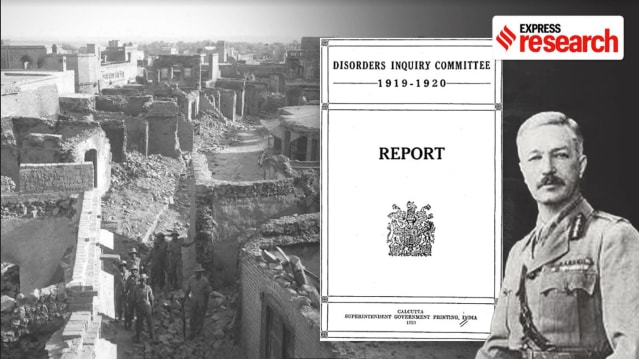Jallianwala Bagh: New research reveals how colonial govt was racist in paying compensation to Indians affected
In an interview, historian Hardeep Dhillon says that a grossly racialised legal structure was put in place by the British government to compensate Europeans affected in the massacre while undervaluing the claims made by families of Indians killed or injured in the incident.
 While the British government compensated the families of Indians who lost their lives in the Jallianwala Bagh massacre, new research suggests that the compensation was unfair
While the British government compensated the families of Indians who lost their lives in the Jallianwala Bagh massacre, new research suggests that the compensation was unfairOne of the darkest episodes of colonial history in India, the Jallianwala Bagh massacre continues to be deeply embedded in the historical consciousness of the country. On April 13, 1919, General Dyer, a British officer in Punjab led 50 troops to the Jallianwala Bagh in Amritsar where a large peaceful crowd had gathered on Baisakhi to protest against the Rowlatt Act. Dyer directed his troops to open fire on people, sparing neither women nor children. More than a century since the tragedy, the number of people killed or injured continues to be disputed and Britain is yet to offer a formal apology. The incident garnered huge global attention and propelled the nationalist movement towards seeking independence.
New research by historian Hardeep Dhillon into the history of this episode finds the grossly racialised legal structure put in place by the British government to compensate Europeans affected in the massacre, while undervaluing the claims made by families of Indians killed or maimed in the tragedy. Dhillon, who is an assistant professor of History at the University of Pennsylvania and a graduate of the Harvard department of History published her findings last month in a paper titled ‘Imperial Violence, Law, and Compensation in the Age of Empire, 1919-1922’ in The Historical Journal. In an interview with indianexpress.com, she speaks in detail about the proceedings that took place in the days following the Jallianwala Bagh massacre and how the discriminatory nature of compensation was made possible due to the kind of legal proceedings that had been put in place by the British after the revolt of 1857. As she explains, this history is just as relevant to the past as it is to the present given that “our current practice of compensation and demands for reparations are still operationalized and sorted through similar legal structures.”
Edited excerpts:
What was the exact amount that the colonial government reached to give as compensation to both Indians and Europeans in the Jallianwala Bagh massacre?
In 1919 and 1920, the colonial government attempted to conceal its history of compensation and reinterpret the violent events of that year as an “exception” to colonial rule. The fact that it took over 100 years for a scholar to address this topic, after discovering misclassified files scattered across three continents, highlights the extent of their success.
It is important to emphasise that Jallianwalla Bagh was not an isolated incident of protest or violence in colonial Punjab. In the early months of 1919, colonial subjects from Punjab, Delhi, and Bombay came together in protest against oppressive British policies. Some targeted the infrastructure and imperial foundations of the colonial government, such as railway lines, telegraph wires, and local banks. In response, British officials declared martial law and used incredible force against Indian protesters in Delhi, Bombay, Lahore, Amritsar, Kasur, and Gujarat. British pilots conducted air bombings in parts of Gujranwala, and other British officers caned, flogged, and detained Indian men and male children without any warrant. Additionally, colonial officials imposed a quarantine on the Punjab region, preventing people from entering or leaving. All of this violence occurred simultaneously with General Reginald Dyer’s order to cordon off Jallianwala Bagh in Amritsar and open fire without any warning on an unarmed crowd.
